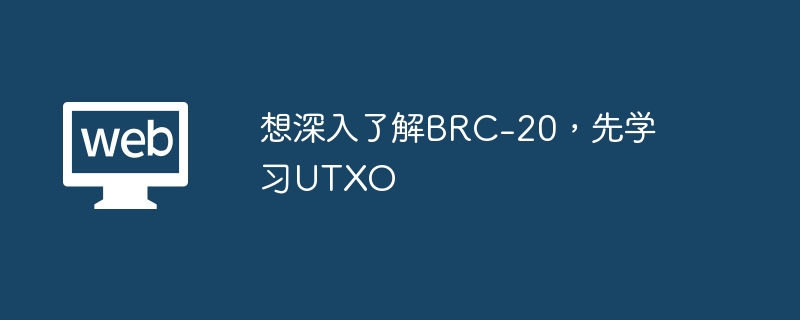You may also know that a very important factor that limits the current large-scale application of blockchain technology is performance, which is also one of the reasons why many traditional Internet practitioners are not optimistic about blockchain technology. .
So, how to solve the performance problem of blockchain? One of the solutions is Sharding technology.
01
What is sharding?
Sharding is a form of database partitioning, also known as horizontal partitioning, which divides a large database into many small, processable parts to improve performance and shorten response time.
Sharding is not a new concept. It appeared in traditional centralized database management as early as the late 1990s. The popularity of this concept can be attributed to Ultima Online, a role-playing game played by multiple players simultaneously online.
In this game, the developers assign players to different servers to relieve traffic pressure (this means there are many parallel "game worlds"). Commercially, a common sharding case is to divide the user information database according to geographical location, put user information in the same area together, and store it in a separate server.
02
What is sharding in the blockchain field?
The blockchain is equivalent to a database, and each node is equivalent to an independent server. Under normal circumstances, only one of these nodes can obtain the right to record and produce blocks at a time. The remaining nodes that have not obtained the right to produce blocks are equivalent to doing "useless work" and wasting computing power.
If sharding technology is applied to the blockchain, it is equivalent to decomposing all pending tasks in the blockchain network (such as confirming transactions, running DApps, etc.), and all nodes in the entire network will also perform Grouping, each group processes a decomposed task (such as 150 pending transactions) at the same time. This changes from the original single node processing all tasks of the entire network to multiple groups of nodes processing in parallel at the same time.

For example, assume that there are currently 8,000 nodes (miners) on Ethereum, and there are 15,000 transactions to be confirmed on the entire network. . Ethereum can process 7-15 transactions per second. Under normal circumstances, it takes at least 1,000 seconds to process these pending transactions. Of course, new pending transactions will be generated during the processing.
If sharding technology is used to divide 8,000 nodes into 100 groups, each group has 80 nodes, and these 15,000 pending transactions are divided into 100 partitions, each with 150 transactions, then each group of nodes (80 ) can process the pending transactions (150) in their respective partitions in parallel, so that all 15,000 pending transactions can be processed in as little as 10 seconds.
From this example, we can see that sharding technology can greatly improve the performance of the blockchain.
03
Potential risks of sharding technology
So, are there any flaws in sharding technology? The answer is yes.
Although sharding technology can solve the performance problems of the blockchain to a certain extent and make the blockchain more scalable, it also has two flaws.
One is the communication problem between different zones after partitioning. The above example divides the Ethereum network into 100 partitions. Each partition is independent, which is equivalent to 100 independent, parallel Ethereum blockchains, each of which is managed by a group of miners (80 Node) maintains and confirms transactions.
These 100 independent Ethereum blockchains cannot communicate with each other. If they want to communicate, it is necessary to add a cross-partition communication mechanism (similar to cross-chain), which will increase the complexity of the blockchain and development The difficulty will also increase.
The second is the security of the blockchain. Still the above example, before fragmentation, the Ethereum network has a computing power of 8,000 nodes. After being divided into 100 partitions, each partition is equivalent to an independent Ethereum blockchain, and the computing power drops to Computing power composed of 80 nodes.
At this time, it is much easier to carry out a 51% computing power attack on one of the partitions. By controlling a partition, an attacker can do evil in this partition and tamper with transactions.
The Ethereum Foundation plans to use sharding technology as one of the upgrades to Ethereum 2.0. We will wait and see how Ethereum solves the above 2 flaws of sharding technology.
The above is the detailed content of What is sharding mentioned by Buterin as the future of Ethereum scalability?. For more information, please follow other related articles on the PHP Chinese website!
 想深入了解BRC-20,先学习UTXOMar 06, 2024 pm 01:34 PM
想深入了解BRC-20,先学习UTXOMar 06, 2024 pm 01:34 PM最近大热的BRC-20 Token是基于比特币,但比特币区块链无法对其进行规则约束。制造BRC-20 Token的成本在于将文件添加到区块链中,以及未来与Token关联的UTXO的移动。 既然UTXO这么重要,今天我们就来简单介绍一下U…
 你的比特币真的完全属于你吗?Mar 06, 2024 pm 01:30 PM
你的比特币真的完全属于你吗?Mar 06, 2024 pm 01:30 PM目前,一枚比特币价值近 22 万人民币。对于刚入圈的新人来说,肯定很关心比特币的安全问题。 那么,比特币安全吗?换句话说, 钱包里的比特币,容易被黑客盗走吗? 01. 私钥、公钥、地址就像银行取款、网银转账需…
 加密货币开发服务领域有哪些新兴机会Mar 12, 2024 am 09:30 AM
加密货币开发服务领域有哪些新兴机会Mar 12, 2024 am 09:30 AM在快速发展的加密货币领域,加密货币开发服务领域充满了新的机会。随着加密货币的采用不断增长,对创新和强大的货币开发解决方案的需求也在不断增长。从创造新币到增强现有币,开发商、企业家和企业都面临着广泛的…
 比特币地址有哪些?Mar 06, 2024 pm 01:21 PM
比特币地址有哪些?Mar 06, 2024 pm 01:21 PM在加密世界里,钱包地址就像 “银行卡账号”、“收件地址”一样重要,任何操作都离不开它,随着Ordinals 协议的诞生,推动了比特币基于隔离见证、Taproot升级的采用,这让很多人第一次使用“bc1p”等特殊抬头的地…
 2024 年 Web3 上排名前 10 的加密货币列表Mar 08, 2024 am 10:09 AM
2024 年 Web3 上排名前 10 的加密货币列表Mar 08, 2024 am 10:09 AM去中心化网络或 Web 3.0 加密货币是推动互联网下一次迭代的数字资产。它们基于区块链技术。与 Web 2.0 的集中式平台和服务相比,Web 3.0 旨在构建一个不太集中、更加透明且以用户为中心的互联网。Web 3.0 加密货币…
 MEME币种加密货币分析Mar 12, 2024 am 09:32 AM
MEME币种加密货币分析Mar 12, 2024 am 09:32 AM随着主要Meme币的飙升,以下是一些可能是现在购买的最佳加密货币Meme币的较小替代品。 随着比特币(BTC)突破7万美元,并瞄准重新测试上周创下的纪录高点,主要Meme币继续暴涨,但随着它们的估值变得越来越庞大,…
 以太坊layer2龙头Arbitrum入门Mar 06, 2024 pm 02:22 PM
以太坊layer2龙头Arbitrum入门Mar 06, 2024 pm 02:22 PM去年下半年,整个加密市场处在深熊困境当中,但Arbitrum生态代表项目GMX和Treasure DAO依然逆势增长, 进入2023年以来,随着市场整体回暖,Arbitrum生态更是全面开花。 尤其是在Arbitrum 宣布发放治理Token ARB,…
 这5种加密货币持续飙升!Mar 08, 2024 am 10:12 AM
这5种加密货币持续飙升!Mar 08, 2024 am 10:12 AM持续的加密货币上涨主要是由比特币减半带来的兴奋推动的,比特币已经飙升至 65,000 美元以上并达到历史新高,加密货币市场的传统通配符——模因币——也几乎没有被排除在外。 事实上,过去 7 天内,多个著名的 mem…

Hot AI Tools

Undresser.AI Undress
AI-powered app for creating realistic nude photos

AI Clothes Remover
Online AI tool for removing clothes from photos.

Undress AI Tool
Undress images for free

Clothoff.io
AI clothes remover

AI Hentai Generator
Generate AI Hentai for free.

Hot Article

Hot Tools

Dreamweaver CS6
Visual web development tools

DVWA
Damn Vulnerable Web App (DVWA) is a PHP/MySQL web application that is very vulnerable. Its main goals are to be an aid for security professionals to test their skills and tools in a legal environment, to help web developers better understand the process of securing web applications, and to help teachers/students teach/learn in a classroom environment Web application security. The goal of DVWA is to practice some of the most common web vulnerabilities through a simple and straightforward interface, with varying degrees of difficulty. Please note that this software

WebStorm Mac version
Useful JavaScript development tools

Atom editor mac version download
The most popular open source editor

MinGW - Minimalist GNU for Windows
This project is in the process of being migrated to osdn.net/projects/mingw, you can continue to follow us there. MinGW: A native Windows port of the GNU Compiler Collection (GCC), freely distributable import libraries and header files for building native Windows applications; includes extensions to the MSVC runtime to support C99 functionality. All MinGW software can run on 64-bit Windows platforms.






